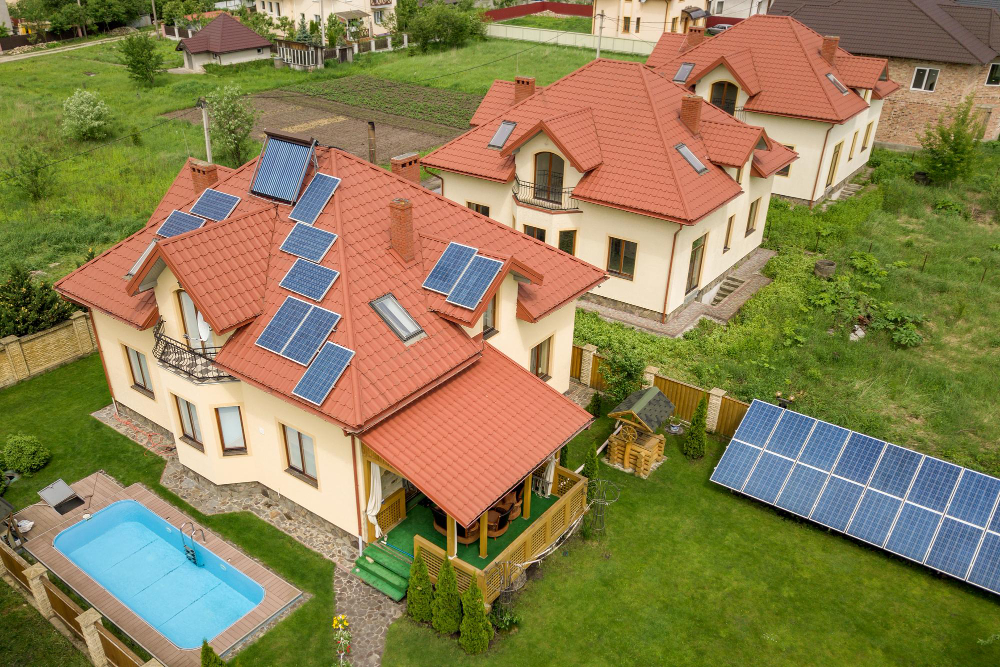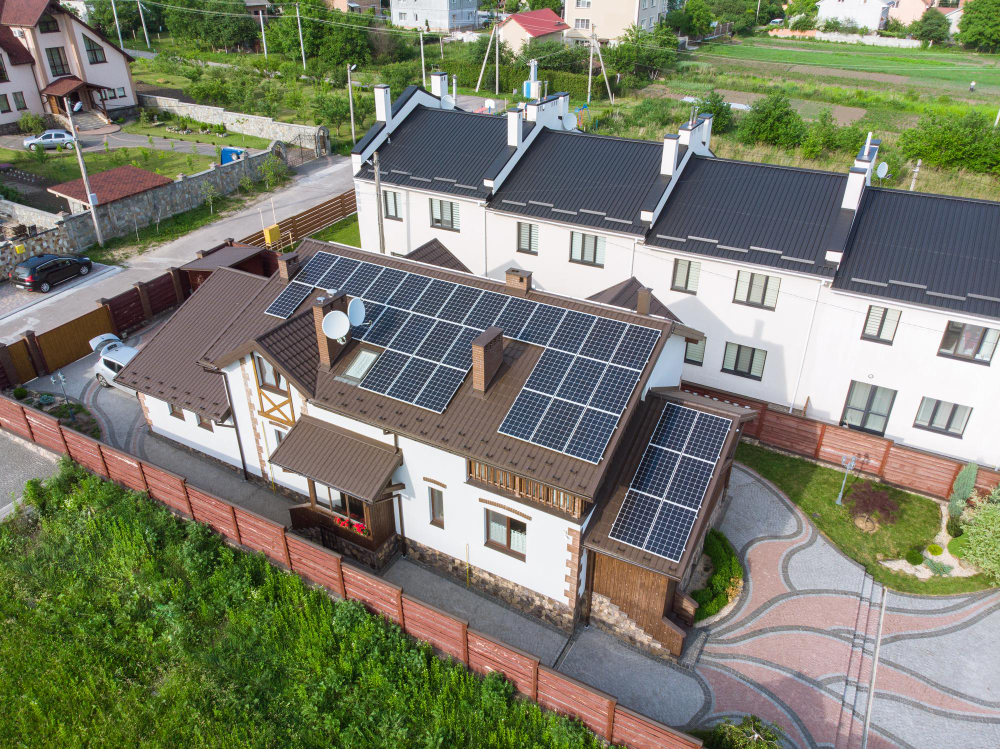Last updated on
In the wake of increasing environmental concerns and the quest for sustainable energy sources, solar power has emerged as a beacon of hope. Harnessing the abundant energy emitted by the sun, solar panels have paved the way for a revolution in residential power supply.
The idea of powering our homes with sunlight might have once seemed like a futuristic concept, but it’s now a tangible reality for many homeowners worldwide. In this article, we’ll explore the transformative potential of solar energy for your home’s power supply, delving into its benefits, technical aspects, financial implications, and the broader impact on both individuals and the planet.
Understanding Solar Energy

Solar energy is derived from the sun’s radiation, which is harnessed using photovoltaic (PV) cells to produce electricity. These cells are typically made from silicon, a semiconductor material capable of converting sunlight into electricity through the photovoltaic effect.
When sunlight hits the PV cells, the photons in the sunlight knock electrons loose from atoms, generating an electric current. This current is then captured and converted into usable electricity for powering various appliances and devices in your home. Unlike fossil fuels, which are finite and contribute to pollution and climate change, solar energy is renewable and environmentally friendly.
Advantages of Solar Power for Homes
One of the most significant advantages of solar power for homes is its potential to reduce or even eliminate reliance on the grid for electricity. By generating your electricity from sunlight, you can significantly lower your energy bills and insulate yourself from future price hikes in traditional energy sources.
Additionally, solar panels require minimal maintenance, with no moving parts to wear out, resulting in long-term cost savings. Furthermore, solar energy production peaks during the day when demand is often highest, aligning with the natural energy usage patterns of most households.
Financial Considerations and Incentives

While the upfront cost of installing solar panels can be substantial, there are numerous financial incentives and rebates available to offset these expenses. Many governments offer tax credits, grants, and subsidies to encourage homeowners to adopt solar energy.
Additionally, some utility companies offer net metering programs, allowing homeowners to sell excess electricity back to the grid, further offsetting the cost of their investment. Over time, the savings on energy bills can outweigh the initial investment, making solar power a financially attractive option for homeowners.
Technical Aspects of Solar Panel Installation
Installing solar panels on your home involves several technical considerations, including site assessment, panel placement, and system sizing. According to Aeon Energy, a professional installer will evaluate your property’s orientation, shading, and roof pitch to determine the optimal placement for maximum sunlight exposure.
Additionally, they’ll calculate the size of the solar array needed to meet your energy requirements based on factors such as household size, electricity usage, and geographic location. The installation process typically involves mounting the panels on the roof or ground and connecting them to an inverter, which converts the DC electricity generated by the panels into AC electricity compatible with your home’s electrical system.
Environmental Impact and Sustainability
Switching to solar power offers numerous environmental benefits, including reducing greenhouse gas emissions and mitigating climate change. By replacing fossil fuel-based electricity generation with clean, renewable solar energy, homeowners can significantly decrease their carbon footprint and contribute to a more sustainable future.
Additionally, solar panels have a relatively low environmental impact compared to other energy sources, with minimal water usage and no air or water pollution during operation. As technology advances and economies of scale drive down costs, solar energy is poised to play an increasingly crucial role in the transition to a greener, more sustainable energy system.
The Future of Solar Energy in Homes
Looking ahead, the future of solar energy in homes appears promising, with continued advancements in technology and growing consumer demand driving adoption. Innovations such as solar shingles, battery storage systems, and smart grid integration are making solar power more accessible, efficient, and reliable than ever before.
As costs continue to decline and efficiency improves, solar energy has the potential to become the predominant source of electricity for homes worldwide. By embracing solar power, homeowners can not only enjoy the immediate benefits of lower energy bills and increased energy independence but also contribute to a cleaner, healthier planet for future generations.
The Takeaway
The adoption of solar energy has the power to transform not only individual homes but also the broader energy landscape. By harnessing the sun’s abundant energy, homeowners can reduce their reliance on traditional fossil fuels, lower their carbon footprint, and save money on energy bills.
While the initial investment in solar panels may seem daunting, the long-term financial and environmental benefits far outweigh the costs. As technology continues to evolve and public awareness grows, solar energy is poised to play a central role in powering homes sustainably for generations to come.
Embracing solar power isn’t just a smart choice for homeowners—it’s a crucial step towards a cleaner, greener future for all.
Table of Contents




